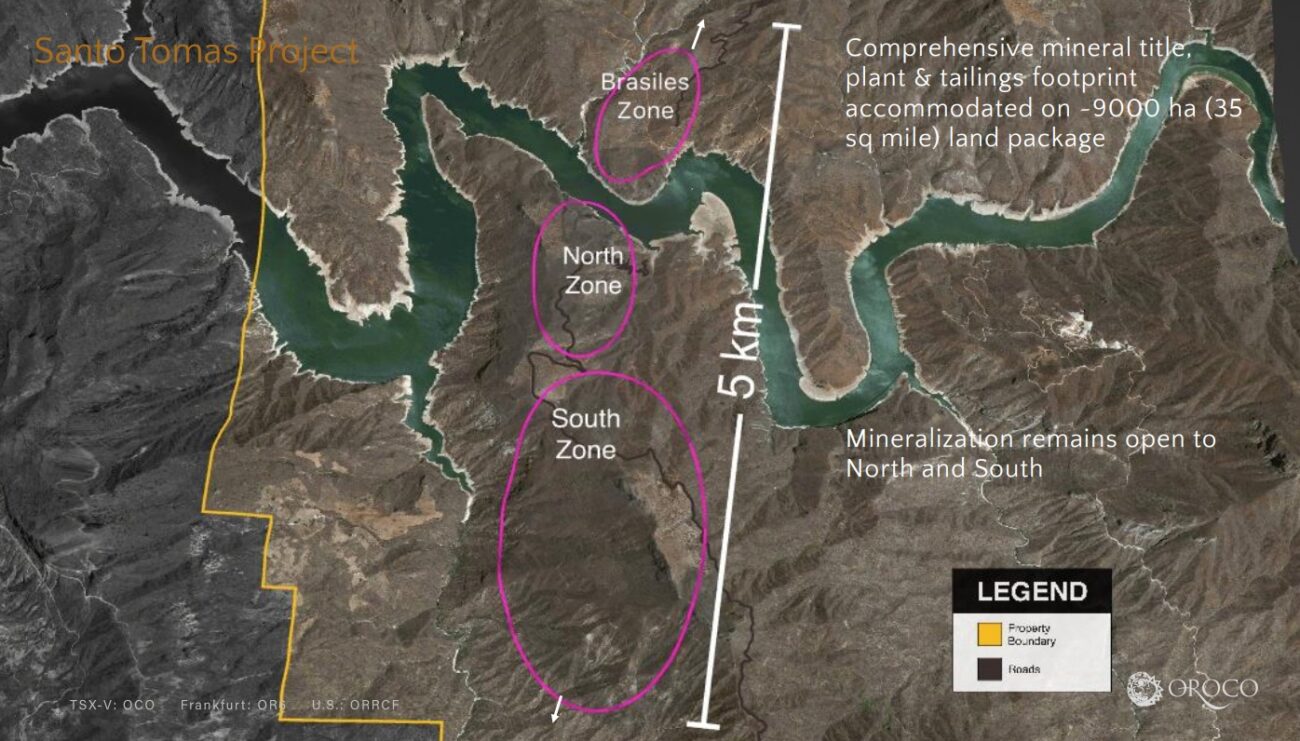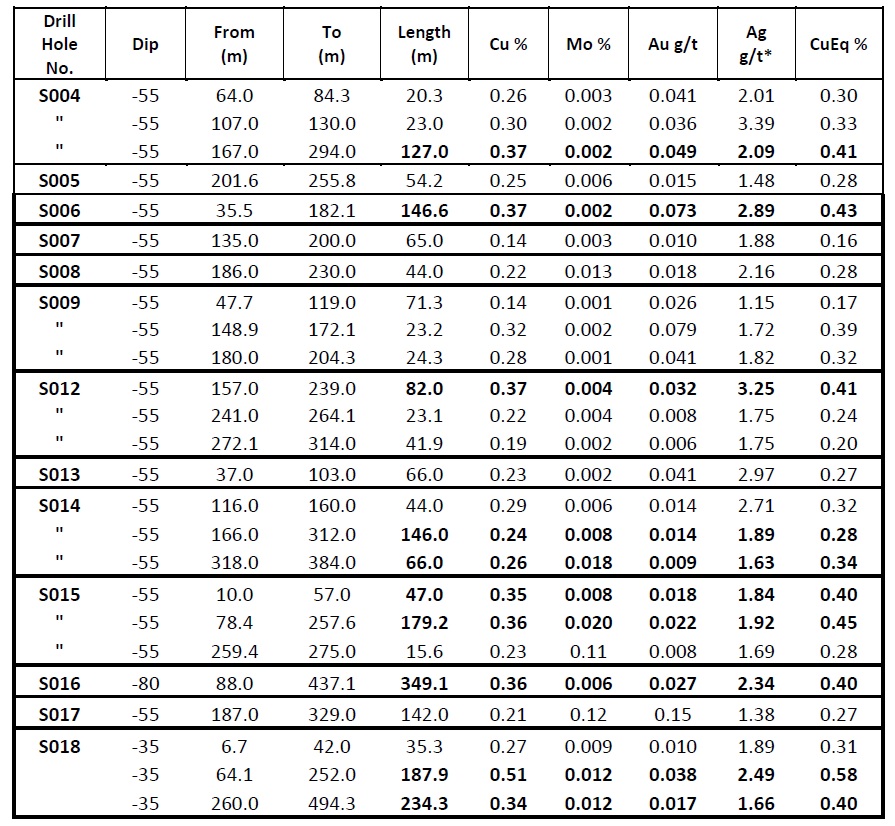
Oroco Resource Corp (OCO.V) released the assay results from 15 holes (S014-S018) which were drilled on the South zone. These holes, with an average depth of almost 600 meters, were targeting the known mineralized zone at Santo Tomas South. In the historical resource estimate, the South Zone has a lower average grade (213 million tonnes at 0.28% copper) but the assay results of the most recent 15 holes seem to indicate the potential for much higher grade.

All 15 holes encountered mineralization. Some of the holes only contained low-grade (S007), other holes were pretty narrow (S005), but the majority of the holes was actually wider and contained a higher average grade than we had anticipated. The headline result is hole S018 which is almost continuously mineralized from the surface. The uppermost interval contains 0.31% CuEq over 35 meters followed by 188 meters containing 0.58% CuEq and a separate zone of 234 meters at 0.40% CuEq. The latter two could really increase the total tonnage at the South Zone and provide a grade boost while at it.
It wasn’t the only hole with a thick and consistent interval with an average grade of in excess of 0.40% CuEq. Hole S004 contained 127 meters of 0.41% CuEq, S006 encountered almost 147 meters of 0.43% CuEq, hole S012 reported back with 82 metes of 0.41% CuEq, and so on.
This means that while drilling on the North Zone has met the expectations, the South Zone is exceeding the expectations. Those expectations were pretty low given the sub-0.30%CuEq grade in the historical resource estimate, but not only does almost every hole exceed that grade, hole S018 is arguably one of the better ones on the property so far.
And there’s an additional kicker. The company uses a molybdenum price of US$12 per pound for its copper-equivalent calculation. While that’s a decent long-term price, keep in mind the current molybdenum price is about three times as high and this could easily add 0.03-0.04% to the copper-equivalent values based on an average grade using an average molybdenum grade of 0.004%. This sounds negligible, and in a way it is, but at a project where every dollar in rock value counts, boosting the recoverable rock value by a silly US$1/t could add US$1B in undiscounted and pre-tax cash flow in an economic scenario. It does matter in the greater scheme of things.
Disclosure: The author has a long position in Oroco Resource Corp. Oroco is a sponsor of the website. Please read our disclaimer.

